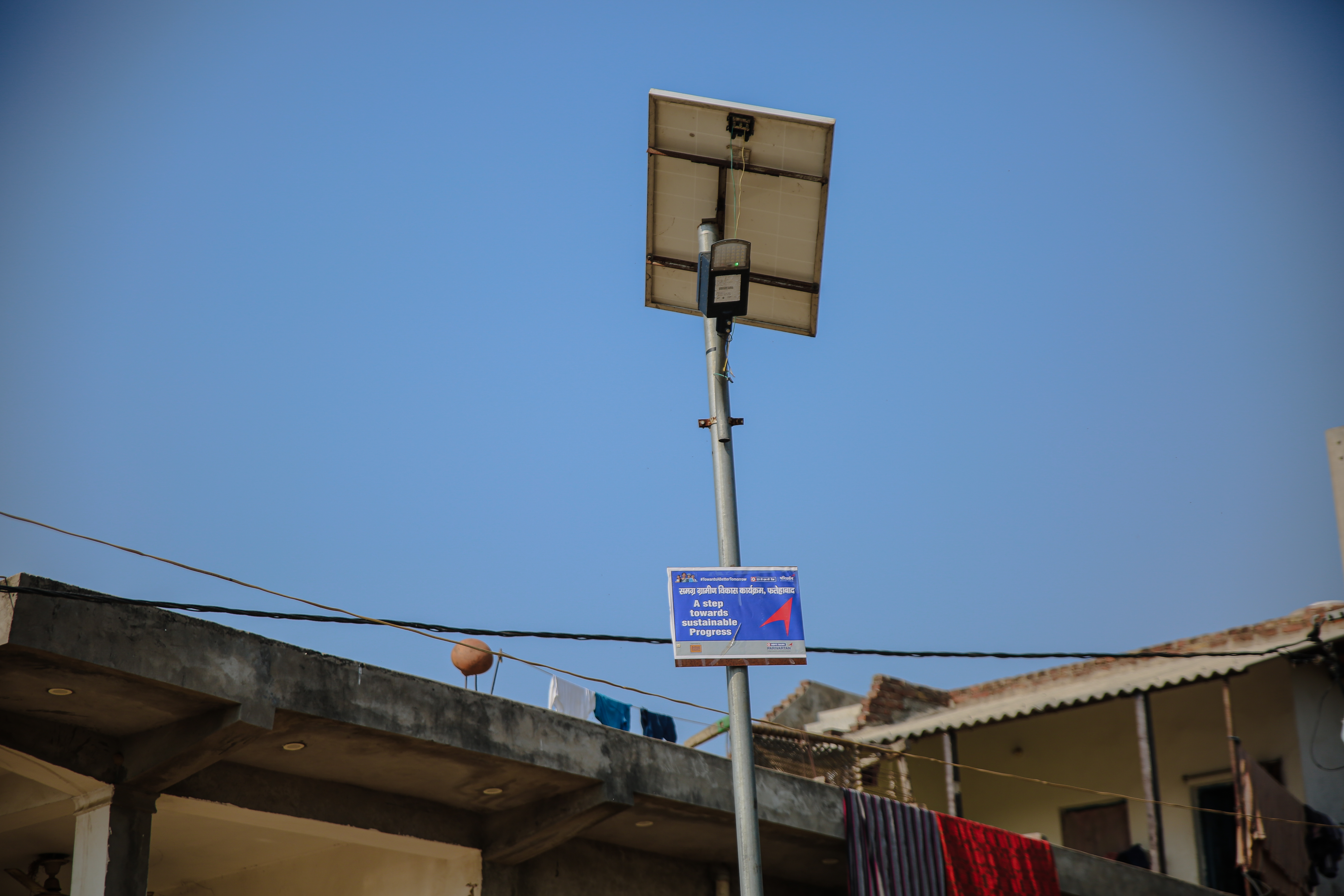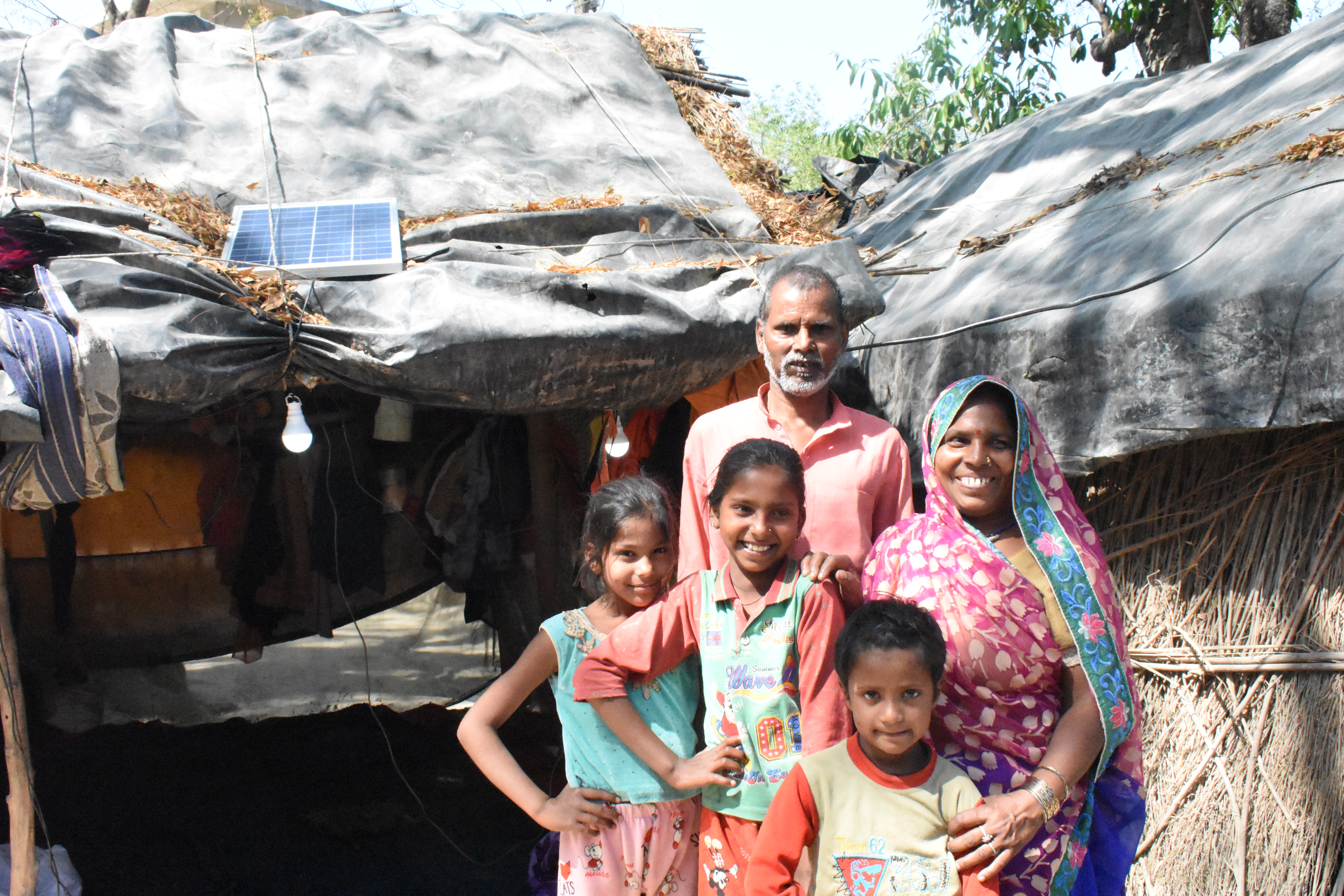As we mark World Earth Day 2025, it’s the perfect moment to spotlight the role of solar energy in transforming rural India—not just environmentally, but socially and economically as well. With climate change looming and traditional resources depleting, clean, alternate and renewable energy isn’t just an ideal—it’s a lifeline. Across villages in India, solar power is reshaping daily life, making communities more resilient, self-reliant, and future-ready.
Here’s how solar energy is empowering rural communities through practical, sustainable solutions.
1. Solar Lift Irrigation: Energizing Agriculture
In India, farming is still often dependent on inconsistent rainfall or expensive diesel-powered pumps. Ambuja Foundation has promoted Solar Powered Irrigation Pumps—non-polluting systems that run on solar energy and eliminate dependence on grid electricity or diesel. Farmers in areas lacking reliable power or facing frequent outages turned to solar pumps as a viable alternative. The impact? Agricultural intensity has increased, allowing farmers to move from mono- cropping to cultivating multiple crops year-round. These pumps are not just a cost-saving measure—they’re boosting yields, income, and climate resilience.
In 2024-25, 148 farmers adopted Solar Powered Irrigation Pumps covering 160 hectares of farmland.
2. Clean Drinking Water with Solar-Powered Jal Minars
Building a Water Minar for safe drinking water in Ujhaoli village, Agra which was once categorised as vulnerable and conflict affected area, initially grappled with acute shortage of safe drinking water leading to intestinal waterborne diseases and malnutrition. Frequent power cuts and low ground water levels made use of submersibles pumps unviable. Jal Minars, a decentralised water harvesting system as a solution to safe drinking water was suggested to be built along with a solar powered purifying system. Engaging the community, a village development committee was formed which supervised the construction of a minar with a holding capacity of 5,000 litres and now ensure the maintenance of the structure.
A local resident Mrs. Tulsa Devi shared, “The solar operated water minar addresses the challenge of unavailability of water when there is no electricity; now we get safe drinking water at any time.”
3. Lighting Up Health Care Centres
Reliable power is essential for functioning health services, particularly in maternal and child care. In partnership, solar panels were installed in 8 Primary Health Centres (PHCs) of Chandrapur with 50 more such panels to be installed in more PHCs.
This solar infrastructure ensures uninterrupted electricity, which has improved access to antenatal care, safe deliveries and reduce the financial strain on communities. By keeping lights and medical equipment running, these efforts are literally saving lives.
4. Enhancing Education Through Solar Lighting
Frequent power cuts in government schools made it difficult to conduct classes and use smart teaching tools. In Fatehabad block, 18 schools were equipped with 1 kW solar panels. These panels ensure consistent electricity, enabling proper use of fans and digital teaching aids. This has led to better student attendance, punctuality, and a more interactive learning environment—while also instilling an early appreciation for clean energy in the next generation.
5. Safer Streets with Solar Streetlights
Safety after sunset is a major concern in rural communities. In areas like Fatehabad, the absence of streetlights meant relying on dangerous kerosene lanterns. Through solar-powered streetlight installations, Ambuja Foundation has made night-time travel safer—especially for women, children, and the elderly. In 2024-25, 327 solar powered street lights were setup in project locations.

6. Solar Fencing: Protecting Crops from Wildlife
In the forest-surrounded villages of Haridwar’s Pathari Shyampur Range, wild animals like elephants and nilgai caused upto 60–70% crop damage. Farmers were encouraged to install solar-powered fencing systems—safe deterrents that emit mild electric pulses. For farmer Sushil Kumar, the difference was transformative. Freed from constant crop guarding, he focused on growing lemongrass and even set up an extraction unit. His success encouraged other farmers—now, over 210 solar fencing systems have been installed in the area.
7. Lighting Up Households
In remote hamlets like Jungle Tola, where electricity was absent and candles were a luxury in homes, Solar Powered light bulbs were provided to below-poverty-line households. The result? Women feel safer after dark, children can study, and life’s smallest moments—like a family sharing a meal or preparing for early prayers—are lived in light, not darkness. It’s a simple change with profound emotional and practical impact.
The Road Ahead: Solar as a Pillar of Rural Resilience
The stories above illustrate a crucial point: solar energy isn’t just about saving the environment—it’s about enabling lives and livelihoods. Whether it’s clean water, productive farming, secure streets, or empowered learning, solar power is quietly but powerfully reshaping rural India. As we move toward India’s net-zero goals, these grassroots solar solutions are vital for long-term sustainability. With continued support, awareness, and investment, solar can become the backbone of resilient, self-sufficient, and green rural communities.



